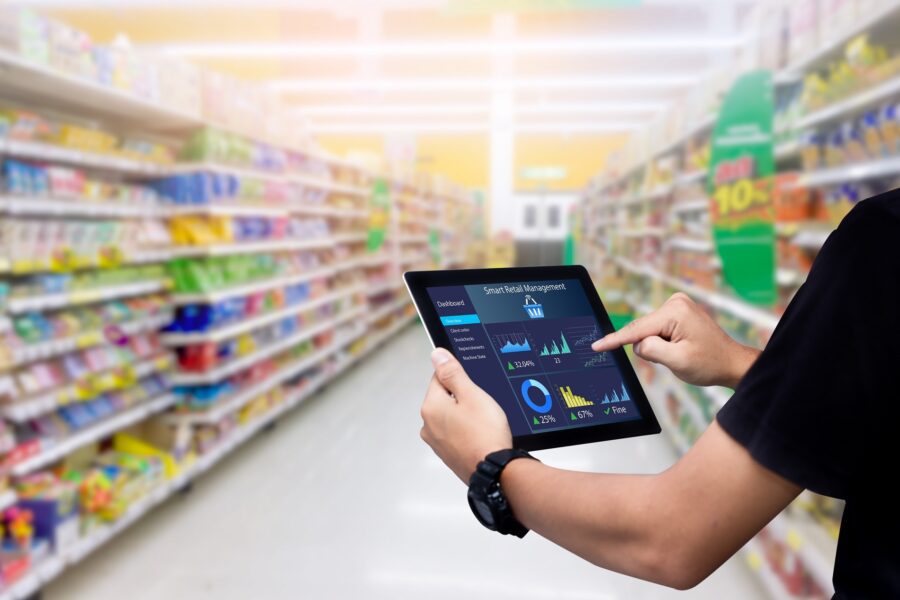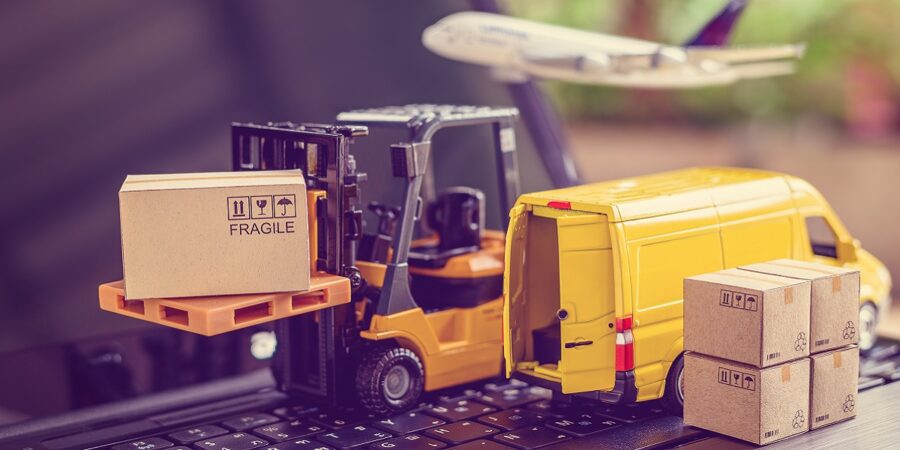
Retail
Optimizing the Return Process
Written by: Parcel Pending
5 Min Read
Published: September 21, 2021
Updated: August 25, 2023
When running an online store, you can expect to receive return requests from your customers – particularly if you do not have a physical storefront where customers can try on or test out your product. Case in point: customers returned an estimated $428 billion in products in 2020, according to the National Retail Federation (NRF)1. Of that, the lion’s share of customer returns were eCommerce purchases, with a whopping 30% return rate compared to only 8.9% for purchases made at brick and mortar retail stores2.
When it comes to shoes and apparel, the return rate is even higher – and a high return rate can lead to increased return shipping costs. Each returned item , in turn, affects profit margins.3 It’s almost as if eCommerce “shopping” has transformed into “discovery options” whereby consumers haphazardly fill their online shopping carts knowing full well they’ll return a significant quantity. As Austin Maddox, EVP of Sales & Operations, North America at Parcel Pending by Quadient, explains: “Pandemic consumers who went online to shop for clothes often resorted to bracketing, buying multiple sizes, since they didn’t know exactly what they’d need. That exacerbated the expense of managing returns.”
The Delicate Dance Between Cost and Customer Expectations
One of the reasons a retailer might be reluctant to make changes to their return process, refund policy, or return policy is customer expectations. However, optimizing the returns process can lead to a better post-purchase experience. Invesp reports that most consumers expect a liberal return policy, and 79% of them want free return shipping. For some customers, a company’s return policy will affect their perception of its customer service. On the flip side of the coin, 86% of retailers agree that a lenient returns and refund policy is critical to increasing revenue and share of wallet, according to a new McKinsey & Company report.4 In short, even if a retailer can’t implement free returns, all returns initiatives (whether it’s a partial refund amount for the returned item, a flexible exchange policy, gift card, etc.) must boost the retailers’ bottom line, but in a consumer-friendly way. After all, customer satisfaction is the end goal.
Emerging Returns Management Initiatives
One reason that reverse logistics are so expensive is that there is typically not one dedicated department to returns management. 58% of retailers admit that lack of accountability exacerbates the problem. Of course, the obvious implication is to create a Chief Returns Officer or a returns management department.
Another initiative to decrease the amount of bracketing in eCommerce shopping carts is to employ pop-up messages alerting consumers that they have the same product in multiple sizes.
Streamlining the Returns Management Process with New Technologies
So, how can you minimize return package requests and thereby refund processing? Retailers have seen lower eCommerce returns by employing technology. The NRF reports that “spending on global reverse logistics technologies will spike in 2021 – forecast last year to hit $604 billion by 2025 – as retailers seek to alleviate a major pain point in the shopping journey and minimize the costs of a returned product”.5,6 Investing in technology may create costs for a retailer now but realize substantial savings later (by way of reduced refund processing).
One of the killer technology battlegrounds in returns management is the virtual fitting room. For instance, Walmart recently announced that it is acquiring Zeekit, a startup that allows shoppers to upload a picture of themselves to see how the product will really look. In China, Nike launched foot-scanning technology to recommend the best shoe and size. And Sephora has been investing in its Virtual Artist, a tool that allows consumers to virtually try on make-up and other products. Showing models with different skin tones and body shapes also helps consumers make smarter buying decisions when it comes to eCommerce.
The relationship between the technology and returns is clear: Shopify reported that customers who virtually tried on clothes were 40% less likely to return the product7,8.
Fixing the Problem at Its Source
Understanding the reason for customer returns is critical. Retailers must go beyond “doesn’t fit” in order to determine new strategies that lower returned goods. Stitch Fix is one of the few retailers that takes a deeper dive into the “why” of a return request.
There’s also a new twist in eCommerce with “clienteling.” Whereas sales associates used to closely guard their “black book” of repeat customers, today, “clienteling” takes the form of a software suite whereby customers’ past purchases are coupled with artificial intelligence to provide a 360-degree view of the customer. The system then offers product recommendations utilizing cross-selling and up-selling to reduce the eCommerce return rate.
Smart Lockers to Improve Customer Experience While Lowering Costs
It’s estimated that the labor cost for a traditional in-person return costs the retailer between $1.00-$1.40 per transaction. Add in an estimated wait time for the customer of approximately three to five minutes, and you have a potential recipe for disaster.
On the other hand, installing smart retail lockers that work as both a product delivery and product return vehicle is a true win/win. Labor costs for a return via a smart locker are almost negligible. Further, a typical return via Buy Online, Pick-up in Locker (BOPIL®) takes the customer less than 30 seconds, and 92% of consumers will buy a product again if the returns process is easy!
The entire returns process with lockers is fast and efficient. Customers can initiate the return via mobile app or online, return the product via selecting “drop off” at the lockers, scan or enter their return barcode, and then place it in a locker. Customers also automatically receive an email confirming that their returned product was received. Most importantly, lockers can be configured so that only certain doors can be used for returns, allowing stores to balance capacity between order pick-ups and returns.
Retailer costs for returns may vary greatly, but in-store returns are typically the most efficient and cost-effective, shaving off 18 days of processing time. Installing smart lockers and recommending them as the “preferred channel” for returns offer direct to the bottom-line savings.
To talk to a Parcel Pending by Quadient sales representative about why offering parcel pick up and parcel distribution can improve your customer experience while lowering costs, contact us here.
Sources:
- The National Retail Federation. (2021). Customer Returns in the Retail Industry 2020 [Report]. Retrieved from: https://nrf.com/research/customer-returns-retail-industry
- Saleh, Khalid. Invesp. E-commerce Product Return Rate – Statistics and Trends [Infographic]. (2021, April 11). https://www.invespcro.com/blog/ecommerce-product-return-rate-statistics/.
- Andrew Petersen, J & Kumar, V. MIT Sloan Management Review. Can Product Returns Make You Money?. (2010, April 1). https://sloanreview.mit.edu/article/can-product-returns-make-you-money.
- Ader, Jacob, et al. McKinsey & Company. Returning to order: Improving returns management for apparel companies. (2021, May 25). https://www.mckinsey.com/industries/retail/our-insights/returning-to-order-improving-returns-management-for-apparel-companies.
- Reda, Susan. National Retail Federation. Retail in 2021: What will endure and what’s going to change?. (2020, December 2). https://nrf.com/blog/retail-2021-what-will-endure-and-whats-going-change.
- Allied Market Research. (2019, May 6). Global Reverse Logistics Market to Reach $603.9 Billion by 2025 at 4.6% CAGR, Says AMR [Press Release]. Retrieved from: https://finance.yahoo.com/news/global-reverse-logistics-market-reach-122347917.html
- Waters, Michael. ModernRetail. How virtual fitting rooms became the next retail battleground. (2021, May 17). https://www.modernretail.co/retailers/how-virtual-fitting-rooms-became-the-next-retail-battleground/.
- Parisi, Danny. Glossy. Virtual try-on is the antidote to the pandemic-fueled rise in returns. (2021, April 14). https://www.glossy.co/fashion/virtual-try-on-is-the-antidote-to-the-pandemic-fueled-rise-in-returns/.



